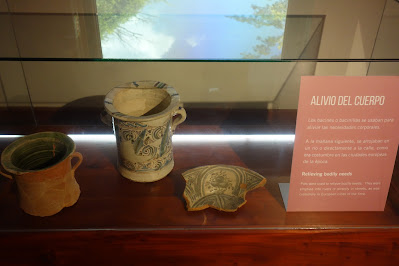The level of anticipation was high on the Emerald Princess early the morning of Sunday, January 23, 2022. Our cruise ship was slowly approaching the eastern Atlantic side of the Panama Canal and it seemed all passengers were on deck to watch. The Panama Canal opened in 1914, cutting a 51-mile route through the sheer granite and dense jungle Isthmus which connects North and South America. The canal links the Atlantic and Pacific Oceans with an intricate lock system. It was one of the most challenging engineering projects ever undertaken. Our ship would pass through the first set of 3 locks, lifting the ship 85 feet above sea level and into Gatun Lake. (A complete passage through the canal would include two more sets of locks.) We were surrounded by other ships who had arrived or were awaiting their turn to pass through the Panama Canal. A tugboat pulled up alongside our ship to assist in our progress through the locks. The Atlantic Bridge seemed to signal our arrival at the beginning of the canal.

The Panama Canal expansion project doubled the capacity of the Panama Canal by adding a new lane of traffic allowing for a larger number of ships, and increasing the width and depth of the lanes and locks allowing larger ships to pass. The expanded canal began commercial operation on 26 June 2016. In the photo below, you can see that just after passing under the Atlantic Bridge, we see a pointed peninsula with two canals flowing on both sides. Our ship sailed to the left, which was the larger canal created in the expansion project. We watched a red ship veer to the right and cross the canal at about the same time we did.
We followed the tugboat up to the gate of the first lock. It seemed like a pretty tight fit for our cruise ship, but in reality, there was plenty of room to slowly float forward into the contained area. Watching the huge gates roll open and then fill with water to elevate our ship was fascinating. Watching the ship ahead of us gave us a good perspective of how the canal locks worked. A beautiful double rainbow filled the sky behind us as we passed through the first lock.
After passing through the three Aqua Clara Locks, we sailed out into the lovely Gatun Lake. Passengers with organized tours were allowed to disembark and go ashore by water shuttle. We had booked a tour to visit Panama City, and would be picked up at the Cristobal container port at the end of the day. (Our ship would pass back through the locks and dock in Cristobal while we were on our tour.)
The bus ride to Panama City would take nearly 2 hours. I passed the time both directions, by either napping or taking photos through the bus window. Like any county, there were areas of poverty, but overall, I found beauty throughout the land and in the people.
Our tour began at Panama Viejo, a UNESCO site which was (according to Wiki) the "oldest continuously occupied European settlement in the Pacific coast of the Americas." Established in 1519, the original location of Panama City grew to a population of 10,000 in 1670. It underwent attack several times by pirates, suffered damage by earthquake and fires, and was finally destroyed by Henry Morgan in 1671. New Panama City was then built to the west where it is situated today.
We climbed the remains of an old Cathedral Tower and had great views of Panama City. Bob discovered bats on the walls!
A small museum with artifacts found at this site was next to the tower, so we went inside for a quick look around. The most fun thing I saw was a bunch of children on a field trip to Panama Viejo. (Unfortunately, the photo is blurry!)
Our final stop for the day was Casco Antiguo, also known as Casco Viejo, or the ‘old quarter,”. It is Panama City’s historic district and considered a UNESCO Cultural World Heritage Site. The district dates back to 1673, and features vibrant plazas and picturesque brick-paved streets surrounded by colorful buildings. Bob found a unique woven bird mask for his collection in one of the cute tourist shops.
We were invited into Church of Jose, which is known for it's beautiful baroque style mahogany gold-leaf covered altar. The legend is that when the pirate, Henry Morgan, attacked the Old City of Panama, the altar was painted black to keep it hidden from him. The Priest told Morgan that the altar had been stolen by another pirate, and even convinced Morgan to make a generous donation to replace the golden artifact. However, this is not true, the style corresponds to a later period in the 18th century and the gold-plating was not done until 1918.
In a back room of the church was set up the most beautiful and intricate diorama of the life of Jesus Christ imagninable! It was fascinating to try to identify all the Bible stories depicted. There were also statues of His 12 apostles in the room.
We rested in Plaza de Francia, a beautiful plaza designed to honor the French for their role in the construction of the Panama Canal, until time to return to our ship in Cristobal.
It was a lot to do and see in one day! But it was a great experience and I'm so glad we chose to visit Panama City and learn a bit about it's fascinating history and culture.

















































































































No comments:
Post a Comment